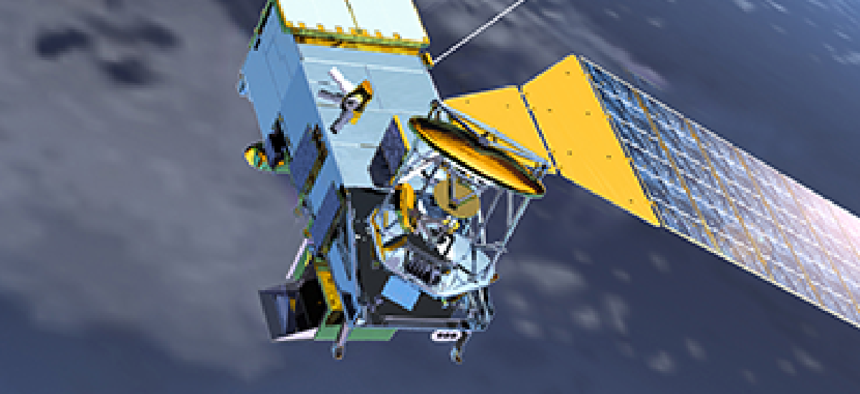NOAA seeks stopgap solutions to looming satellite issue

With a lengthy gap in weather-satellite coverage likely, agency is looking for other ways to ensure forecasts’ quality and timeliness.

Artist's rendering of a polar-orbiting weather satellite. NOAA is now seeking ideas for ways to bridge the expected gap in satellite coverage later this decade. (Image: NOAA)
The National Oceanic and Atmospheric Administration is concerned enough about a potential gap in polar-orbiting satellite coverage that the agency has taken steps to enlist feedback and ideas from the public in hopes of generating solutions.
In short, NOAA is seeking "comments, suggestions and innovative ideas from the public on how to preserve the quality and timeliness of NOAA's numerical weather forecasts" if aging weather satellites critical to long-term weather forecasting cease to function.
"By requesting public comments, we're leaving no stone unturned," said NOAA spokesman John Leslie, who anticipates input from industry and academic organizations.
"NOAA hopes to hear from anyone with constructive ideas that help us successfully address this potential coverage gap," Leslie said. "In addition to the general public request, NOAA will be reaching out to experts from across the USA and from around the world for additional suggestions."
Meteorologists at NOAA have been using data from polar-orbiting satellites to make long-term weather forecasts for years, but those satellites have aged and a program to replace them — jointly managed by the Defense Department, NOAA and NASA — was scrapped in 2010 after a series of delays and cost increases.
NOAA was charged with replacing the polar-orbiting satellites, but even with NASA's assistance, the $13 billion Joint Polar Satellite System (JPSS) is not expected to be operational until at least 2017.
In the meantime, JPSS has made use of a converted demonstration satellite that was originally part of the National Polar-orbiting Operational Environmental Satellite System Preparatory Project. Launched in October 2011, the satellite has a life expectancy of three to five years, said David Powner, director of IT management issues at the Government Accountability Office.
GAO was critical of JPSS in a recent report and recommended that the agency establish a mitigation plan in case of a gap in satellite data.
"If [the current satellite] lasts a full five years and we stay on track for a 2017 launch of the new satellite, we're looking at a 17-month gap," Powner told FCW earlier this month. "Right now, there is a high probability of some gap occurring."
That gap is cause for concern for many reasons. Leslie said the loss of satellite data from one polar orbit "would reduce the long-range accuracy of NOAA's forecasts," though it would not prevent NOAA from continuing its daily weather forecasts.
NOAA has commissioned a study to explore all available options, which include substitute satellite observations, non-satellite data, weather modeling and data assimilation improvements. Some of the options would help NOAA operate more effectively during a data gap period, Leslie said.
"We are investigating all possible solutions," he added.
Comments and ideas can be submitted at NOAA's Satellite and Information Service website. The deadline for feedback is 5:00 p.m. on Dec. 19.
NEXT STORY: 5 ways feds can interoperate






